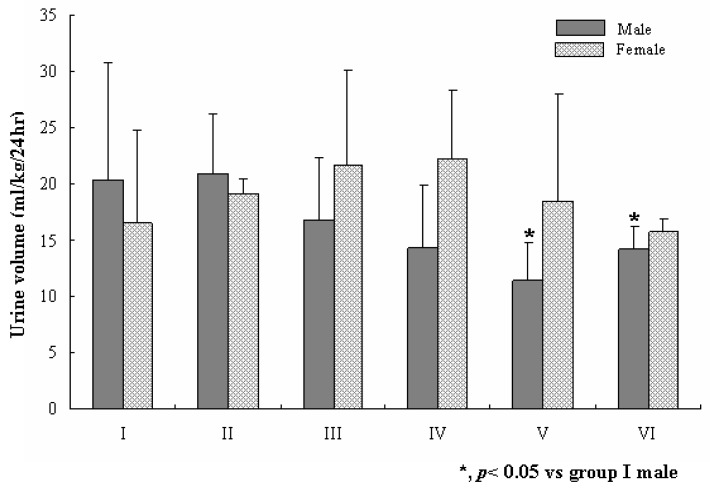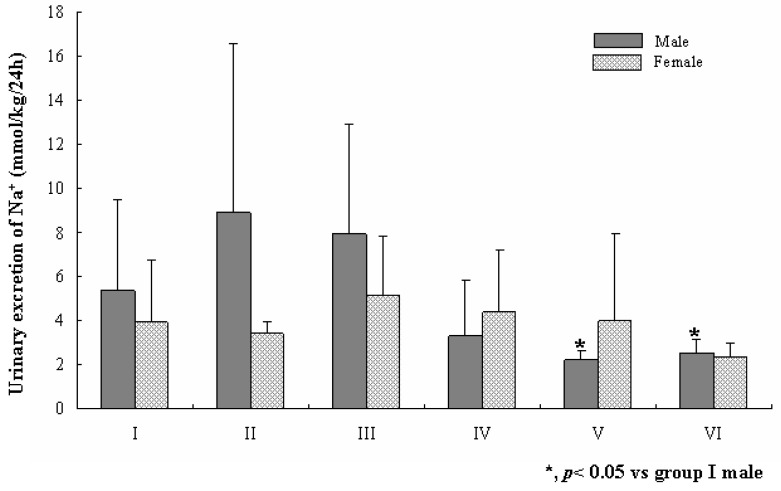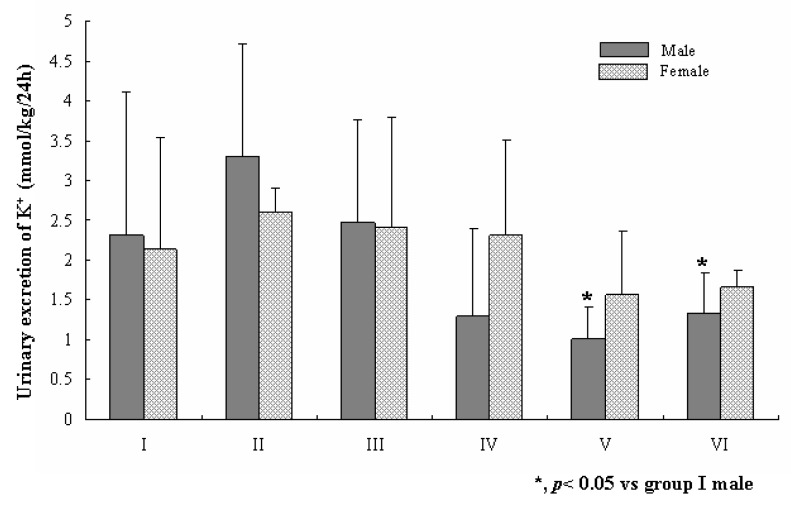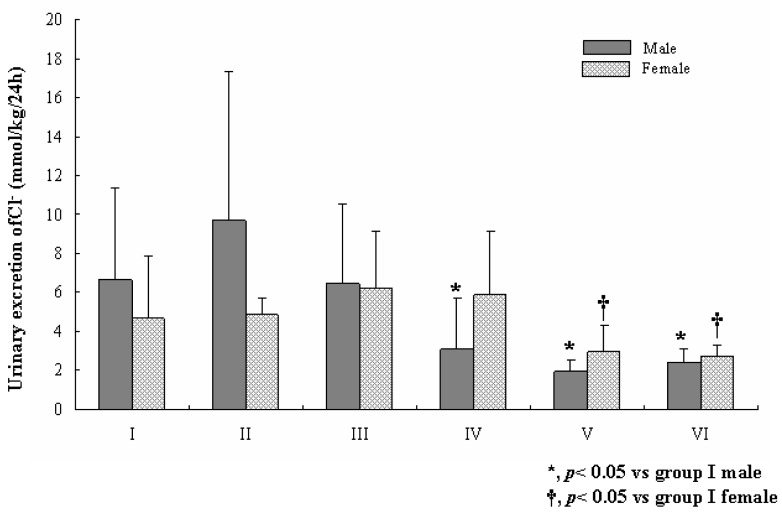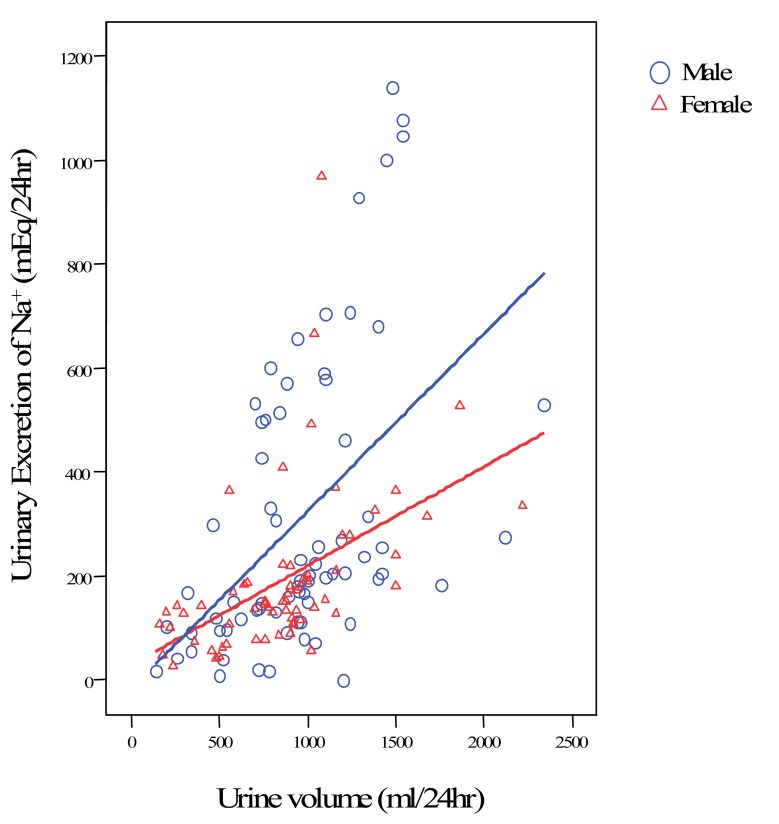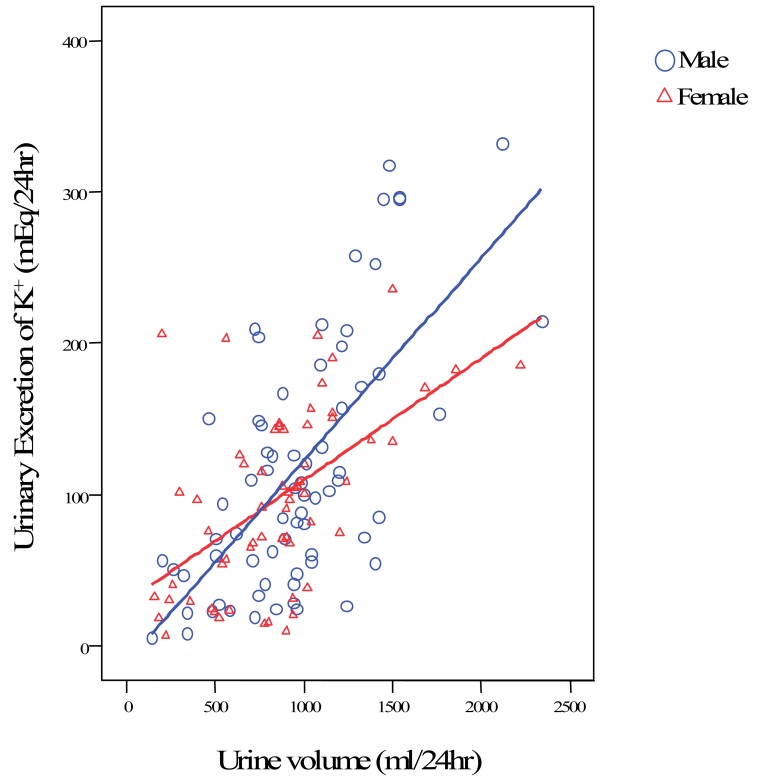Electrolyte Blood Press.
2007 Jun;5(1):9-14. 10.5049/EBP.2007.5.1.9.
Changes in Urine Osmolar Composition seen in Different Age Groups in the Local Korean Population
- Affiliations
-
- 1Department of Internal Medicine, Research Institute of Clinical Medicine Chonbuk National University Medical School, Jeonju, Korea. hope@chonbuk.ac.kr
- 2Department of Pediatrics, Research Institute of Clinical Medicine Chonbuk National University Medical School, Jeonju, Korea.
- KMID: 2134799
- DOI: http://doi.org/10.5049/EBP.2007.5.1.9
Abstract
- Due to their unique living conditions and dietary habits, the Koreans' renal function model may be different from that of the Western people. About 40 years ago, a researcher reported that two thirds of the urine osmolality in Koreans was contributed by NaCl, while less than 1/3 by urea. It is known that the Koreans' daily consumption of NaCl is higher while their protein intake is lower, compared to that of the Westerners. Now-a-days, the Korean's dietary habit is changing to a westernized life style. In this study, we investigated whether there were changes in urine composition and osmolality according to age. The subject of study were 215 Koreans (128 male, 142 female, age 7-68 years) living in the Chonbuk and Chonnam province in Korea. We performed routine physical examinations and analyses of the urine Na+, K+, Cl-, urea, NH3, creatinine, and osmolality on their 24 hour urine samples. In the case of the male, total body water, Na and Cl excretion, urine ammonia excretion were significantly changed between groups. In the case of the female, total body water and urine creatinine excretion were significantly changed between groups. We calculated the urine osmolar contribution of NaCl and urea. Our results showed that NaCl composed 63.6 % of total urine osmolality and Urea composed 36.4% of total urine osmolality. In conclusion, urine osmolar composition is similar to the 1960's, but further studies are required to elucidate the change of urine composition in this population for another 50 years.
MeSH Terms
Figure
Reference
-
1. Rose DB, Post TW. Clinical physiology of acid-base and electrolyte disorders. 2001. 5th ed. New York: McGraw-Hill, Medical Pub. Division.2. Hong YP, Park CS, Hong SK. The Relation of Urine Specific Gravity to Its Composition and Osmolality in the Normal Korean. Yonsei Med J. 1961; 2:27–30.
Article3. Watson PE, Watson ID, Batt RD. Total body water volumes for adult males and females estimated from simple anthropometric measurements. Am J Clin Nutr. 1980; 33:27–39. PMID: 6986753.
Article4. Oh MS, Phelps KR, Lieberman RL, Carroll HJ. Determination of urinary ammonia by osmometry. Anal Chem. 1979; 51:2247–2248. PMID: 532970.
Article5. Boyarsky S, Smith HW. Renal concentrating operation at low urine flows. J Urol. 1957; 78:511–524. PMID: 13476525.
Article6. De Wardener HE, Herxheimer A. The effect of a high water intake on the kidney's ability to concentrate the urine in man. J Physiol. 1957; 139:42–52. PMID: 13481895.7. Epstein FH, Kleeman CR, Pursel S, Hendrikx A. The effect of feeding protein and urea on the renal concentrating process. J Clin Invest. 1957; 36:635–641. PMID: 13428851.8. Chang KS, Park CS, Hong SK. Further analysis of various renal functions in the Korean. 3. Urinary excretion of phosphate, ammonia and titratable acid. Yonsei Med J. 1966; 7:13–19. PMID: 5974422.
- Full Text Links
- Actions
-
Cited
- CITED
-
- Close
- Share
- Similar articles
-
- Diagnostic Value of Functional Bladder Capacity, Urine Osmolality, and Daytime Storage Symptoms for Severity of Nocturnal Enuresis
- Streak artifacts on kidney CT:Ionic vs nonionic contrast media
- Iso-osmolar Iodixanol Is Better than Low-osmolar Contrast for CIN Prevention. And Then?
- Body Composition Changes in Korean Children and Adolescents
- Pathophysiology and management of disorders in water metabolism

